
17 Proven Project Management Best Practices to Set Your Projects Up for Success!
As a project manager, aren’t you often seen as the all-knowing expert?
Your team, stakeholders, and clients look to you for answers to every question!
But let’s be honest: managing a project comes with challenges, like –
- Balancing multiple tasks with limited info
- Managing unexpected risks while staying on track
- Meeting deadlines amid constant changes
That’s why strategic best practices matter. They provide you with the structure to navigate any complexities.
In this guide, we’ll explore 17 proven project management best practices to help you lead successfully.
Let’s dive in!
What is Project Management and Its Best Practices?
Project management involves planning, organizing, and overseeing projects to achieve goals using the right skills, tools, and resources for timely, budget-friendly completion.
A project management lifecycle includes five essential phases:
- Initiation
- Planning
- Execution
- Monitoring and Control
- Closure
To navigate all of these phases successfully and ensure consistent as well as smooth execution from start to finish, successful project managers adhere to some effective strategies.
These strategies are what we are referring to as project management best practices here.
So, in simple terms, project management guides a project from start to finish, ensuring objectives are met, while project management best practices are tried and tested strategies that project managers usually follow to ensure successful project execution.
Also read: Importance of Project Management
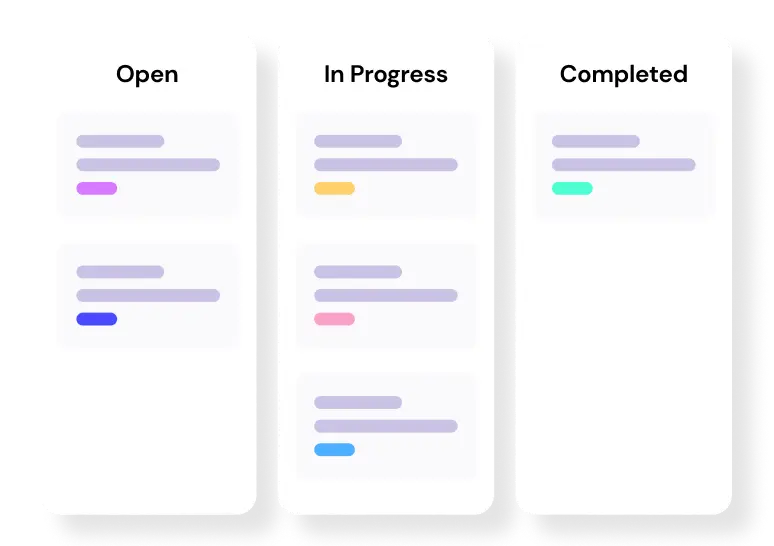
Level up your WordPress project management game with this Trello equivalent solution – where limitless possibilities come at an unbeatable price!
17 Game-Changing Project Management Best Practices
A well-managed project follows a clear strategic path, and here are some proven best practices to guide you in project management from start to finish:
Note: Project management best practices may vary depending on the project’s type and the challenges it encounters. However, the tips and best practices shared here are widely adopted by successful project managers and can benefit you as well. Just be sure to tweak and adapt them as needed.
1. Define project scope and objectives
A project’s roadmap is built on its scope and objectives, and clearly defining them is a core best practice for staying on course.
Here’s how to break it down:
- Define the scope: Set clear boundaries for what the project will and won’t cover.
- Set real objectives: Use SMART goals (specific, measurable, achievable, relevant, and time-bound) to guide the project’s direction, and then plan steps to achieve those goals.
- Engage stakeholders: Identify who’s involved, understand their expectations, and get their buy-in.
Keep the lines of communication open with your team. Ensure your team stays in sync and understands their roles and responsibilities.
Additionally, if suitable, use a project management tool to document the objectives and share it with everyone.
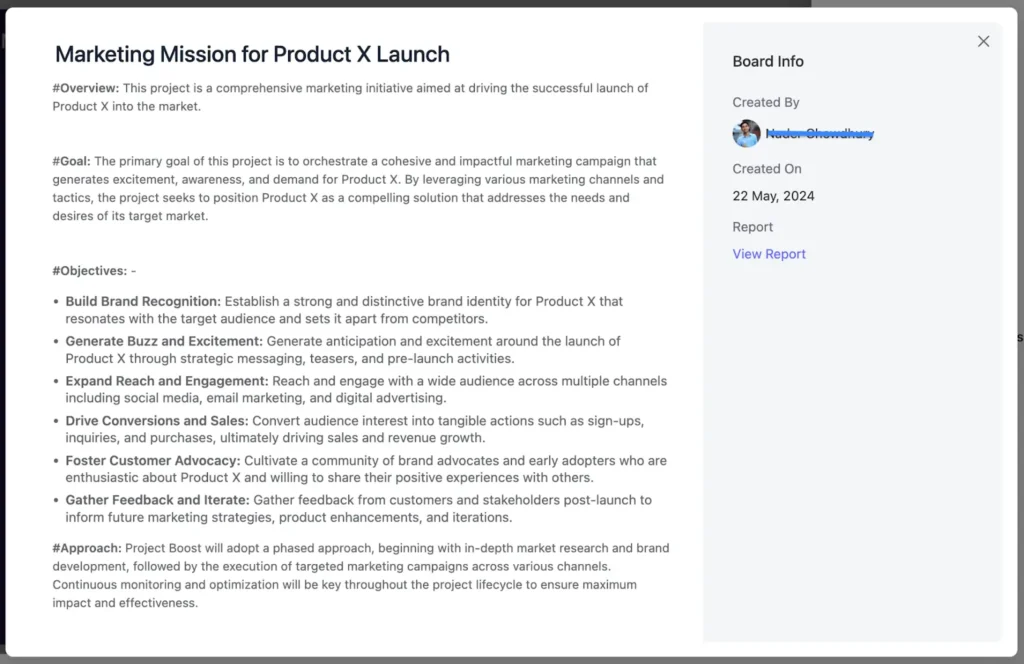
This will ensure that your project team members are always in the loop regarding the project’s scope, objectives, and any adjustments.
Not only will it help you keep the project on track, but it will also foster a more fluid and collaborative work environment.
Tip: Every project has unique goals. So, before you dive in, make sure you are clear about the project management goals you want to achieve by the end.
2. Outline project deliverables and tasks
One of the best practices in project management is to clearly outline the deliverables and tasks. So, start by asking key questions:
- What must be produced in the project?
- What work needs to be done to create these deliverables?
By breaking the project into smaller tasks and creating a detailed to-do list of the project, you can stay organized and focused on what needs to be done.
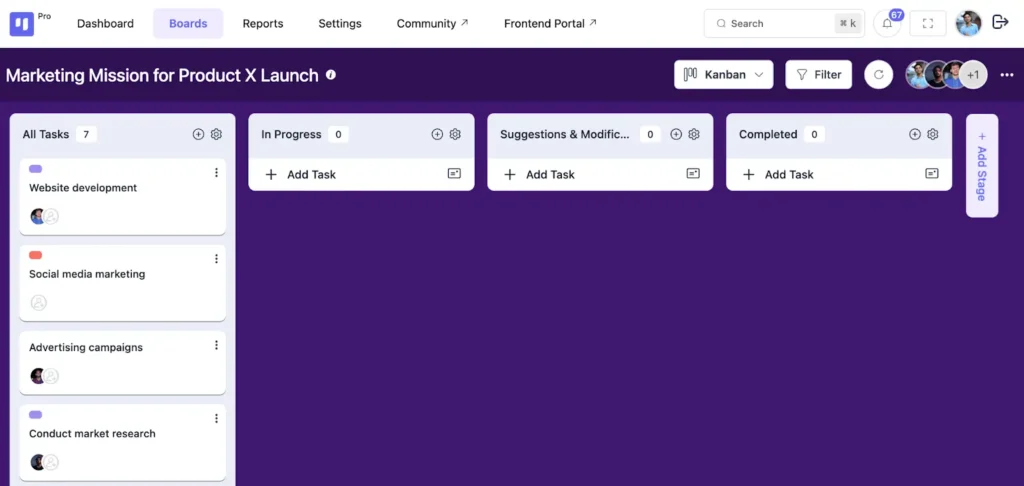
Besides, it’s important to have key stakeholders review and agree on the deliverables to ensure everyone is on the same page.
3. Strategic resource allocation
Plan and manage resources strategically. Decide which resources you are ready to invest in and what is actually required at the very beginning.
Otherwise, projects can quickly face challenges due to shortages or inefficiencies
So, start by:
- Identifying what’s needed
- Estimating the required quantity
- Creating a resource allocation plan
Then, once the project begins, track resource usage regularly. If needed, adjust allocations to prevent shortages or overuse.
In larger companies, multiple projects often compete for the same resources. Therefore, resource allocation becomes even more important.
And here comes a good news!
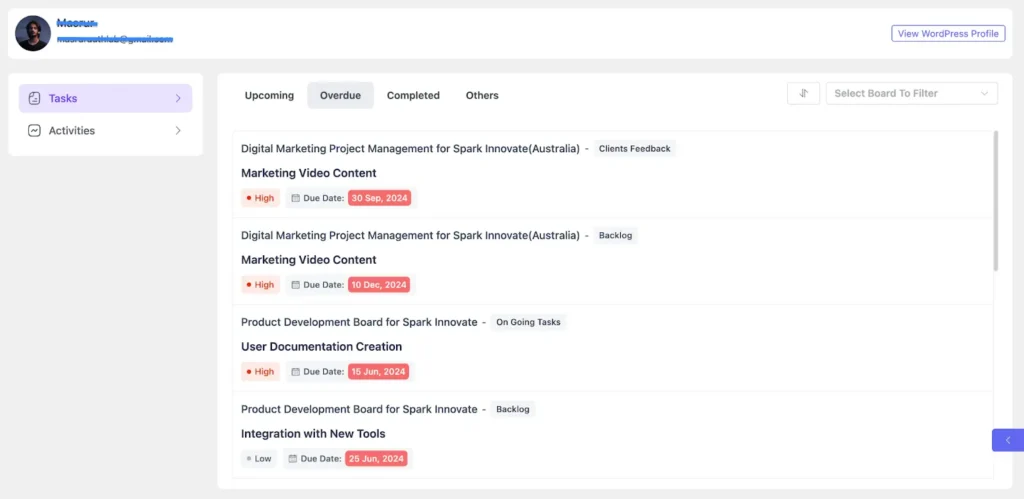
Most project management tools today offer features to manage resource allocation, monitor availability, and ensure seamless project execution with ease.
4. Set realistic timelines
Rushing to meet impossible deadlines might sound productive, but it often backfires.
So, when project managers agree to unrealistic timelines just to satisfy clients, the team ends up overworked, and quality takes a hit. Even with extra hours and caffeine, burnout isn’t a winning strategy.
Instead, project management best practices focus on setting realistic goals, considering risks, and understanding team limits.
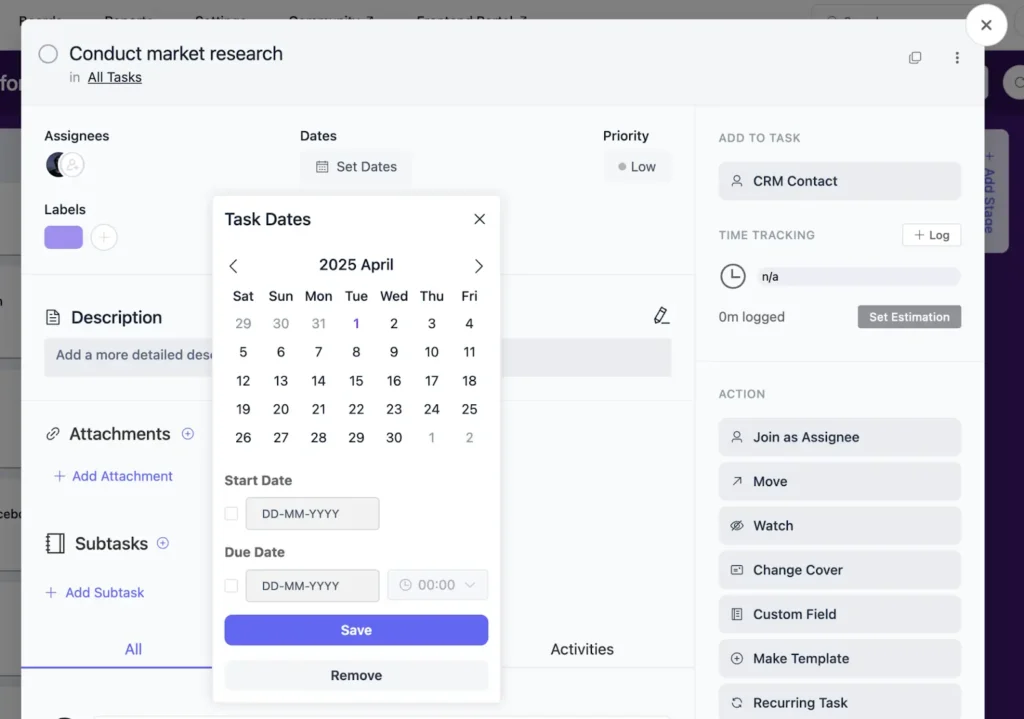
So, start by listing every task needed to complete the project, from planning to the final deliverable, to ensure goals are realistic and achievable.
Remeber, a well-planned project isn’t just about speed, it’s about delivering great results without draining the team.
5. Plan for setbacks and how to take corrective action
Unforeseen changes are often the main reason most projects fail.
According to PMI, the top causes include:
- Changes in company priorities (39%)
- Changes in project goals (37%)
- Changes in initial project requests (35%)
Therefore, prepare for both expected and unexpected project management challenges by identifying potential roadblocks and tracking variances within your team to stay ahead of issues.
Now, recheck the already decided plan and adjust timelines, reallocate resources, or revise the scope to stay on track and avoid bigger issues.

FluentRoadmap Comes Free with FluentBoards Pro!
6. Set up an open and clear workflow
One of the common challenges project teams face is poor coordination. Often, this happens because each team member has a different understanding of the workflow.
When there’s confusion about who does what and when, the project can quickly lose momentum.
To avoid this, as a project manager, it’s crucial for you to create a project workflow that’s easy for everyone to understand.
When team members clearly see how tasks flow from one to the next, they’ll know exactly what’s expected of them and when.
7. Assemble a great and perfect team
A well-assembled and well-managed team plays a key role in ensuring project success.
Remember, how well you pick your battlemates will determine how efficiently you win the war. So, treat building a winning project team with the utmost priority.
To start, set a clear path by identifying and defining all required tasks and the skill sets needed to fulfill them. Decide on your right project team structure and begin formalizing your team.
First, analyze your existing resources. If necessary, consider onboarding new members as well and move forward efficiently, leading to successful outcomes with everyone involved.
Here are some project team management tips to help you lead your team smoothly
8. Establish a clear communication channel
No matter which project leadership style you prefer to lead your team, it’s super important to keep everyone aligned and informed.
And to ensure everyone remains on the same page, consistent and transparent updates on the project’s status at every stage are crucial.
Open communication proactively minimizes obstacles and ensures smooth, uninterrupted progress toward the project’s desired outcome.
That’s why we recommend leveraging a project collaboration tool that offers real-time communication and email notifications.
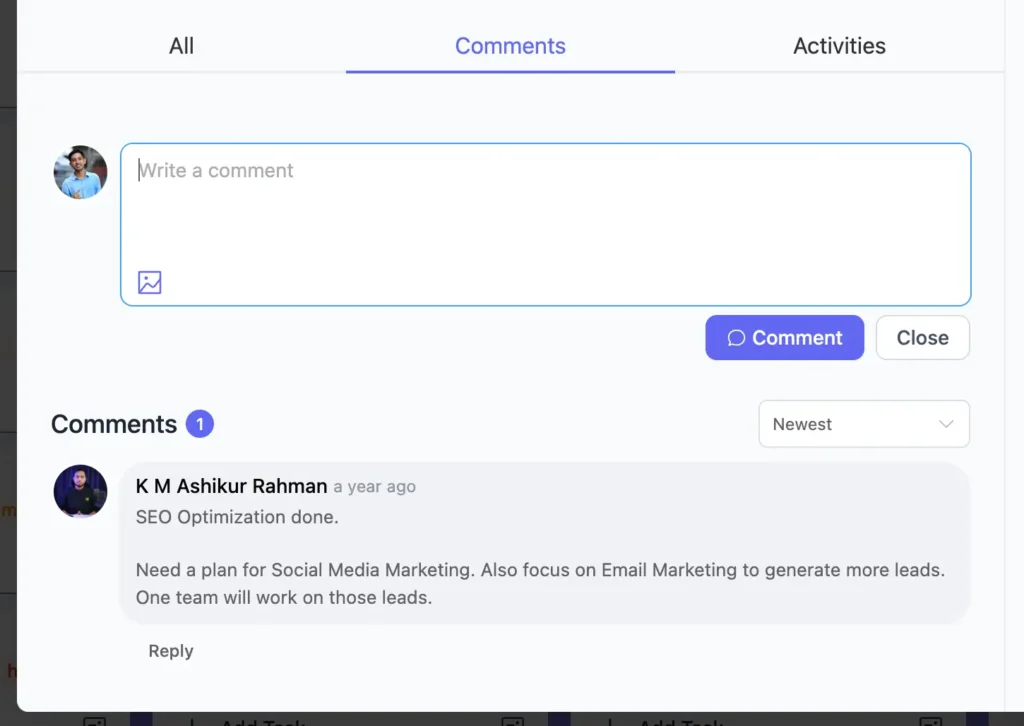
And here’s some good news! Most project management tools available today come with dynamic communication features.
9. Develop a comprehensive project plan
Developing a comprehensive project plan is important to make sure everything always stays on track.
Therefore, when creating a project plan, be sure to include key elements like:
- Scope
- Schedules
- Budget
- Responsibilities
- Risk management
- Quality control
- Personnel
- Tracking
- Escalation and change control
Keep in mind that, although they might sound similar a project brief and a project plan are different in many aspects.
- A project brief provides a high-level overview, whereas a project plan outlines exactly how to achieve your goals.
So, to build an effective project plan for your project, break the project into phases, set milestones, establish deadlines, and define dependencies between tasks.
Identifying the critical path will guide your timeline, while including contingency plans (such as a Plan B) and buffer time accounts for unexpected delays. Also, ensure the project’s priority is clear.
10. Initiate with a strong kickoff meeting
A focused kickoff meeting is essential to finalize alignment and prepare for execution. This meeting is crucial for aligning your team and stakeholders.
Here’s what you should focus on during the meeting:
- Review the finalized project plan to ensure alignment
- Outline the execution strategy for clarity on project execution
- Clarify roles and responsibilities to set clear expectations
By covering these basics, you’ll ensure the meeting sets a positive tone, helping the project run smoothly and creating a collaborative vibe right from the start.
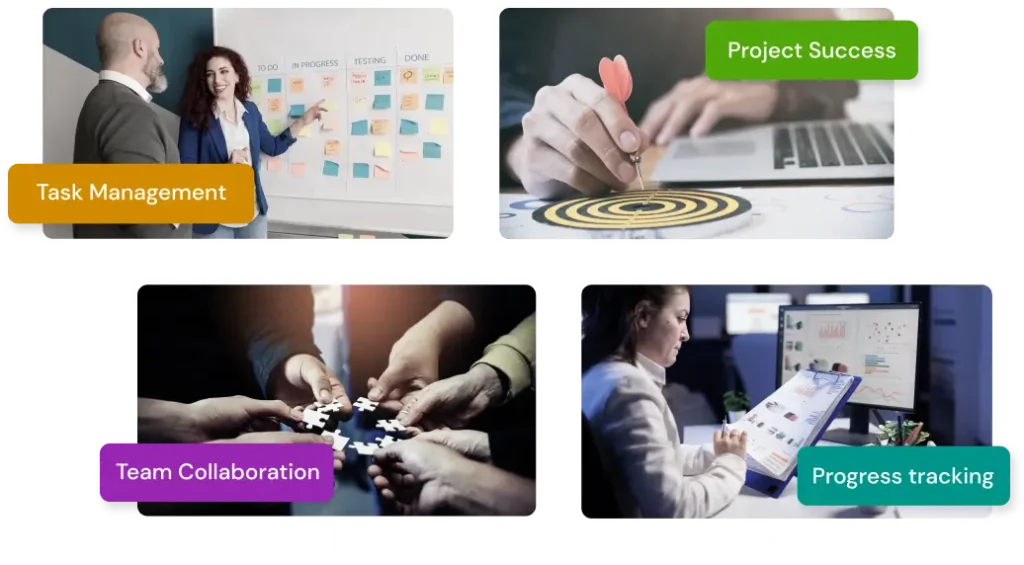
Step into the Future of Project Management!
11. Monitor and track progress regularly
Tracking progress isn’t just something you should do, it’s something you must do.
Staying on top of your project allows you to spot issues before they become major problems and keeps your boss or stakeholders informed at all times.
So, how exactly do you stay on top of progress?
- Track all tasks: Big or small, every task matters
- Play with numbers: Keep a close eye on your project management KPIs
- Report regularly: Stick to a reporting schedule (weekly, bi-weekly, or monthly
- Address issues: Be proactive and discuss problems early
- Be honest: Transparency builds trust, even with setbacks
- Set up a system: Use a tool or spreadsheet to monitor progress

Keep in mind that, when you stay organized and set clear goals, progress stays steady, and the project remains manageable and focused.
12. Proactively manage project risks with a response team
Managing project risks is all about anticipating potential problems and taking proactive steps to prevent them from impacting your project.
Therefore, it’s essential to set up a risk response team that will help monitor and address risks before they become issues.
Now, here’s how you can manage risks effectively:
- Identify potential risks early to develop mitigation plans
- Create contingency plans for unexpected obstacles
- Monitor risks throughout the project to act quickly when needed
- Communicate risks with stakeholders to ensure everyone is informed
- Review risks regularly and adjust plans accordingly
By implementing these strategies, you’ll minimize disruptions, keep the project on track, and increase your chances of success.
13. Prevent scope creep
Scope creep can be a sneaky project killer, often creeping up even in well-planned projects.
That’s why implementing strong change control is a best practice in project management.
It starts with setting clear boundaries and sticking to them. So, how can you manage it?
Well, here’s how:
- Make sure all stakeholders understand the impact of any changes early on
- Keep a clear, detailed project scope at the start and refer to it throughout
- If changes are necessary, update the plan and communicate it to everyone involved
- Use tools to monitor progress and spot potential scope shifts
Ultimately, by managing scope creep, you’ll keep the project on track and within budget, ensuring smoother execution.
14. Ensure quality assurance
Quality is at the heart of every successful project. It’s not just about meeting deadlines; it’s about performance, functionality, consistency, and reliability.
Therefore, to ensure these standards are met, establish clear quality benchmarks from the start.
Break your project down into manageable stages and set clear quality standards for each one.
Refer to past projects or competitor benchmarks to guide your approach. Besides, keep stakeholders updated to avoid surprises.

Level up your WordPress project management game with this Trello equivalent solution – where limitless possibilities come at an unbeatable price!
15. Maintain thorough documentation
Document every stage of the project in detail!
Why?
Well, it ensures everyone is on the same page, helps explain decisions made, and acts as a valuable resource for future projects.
That’s why, instead of just jotting down notes in a random notebook, document everything systematically.
16. Conduct retrospectives and performance reviews
Retrospectives and performance reviews are essential for improving both team dynamics and project outcomes.
When conducting retrospectives, focus on past projects, gather feedback, and identify actionable steps for improvement.
For performance reviews, provide constructive feedback and set clear goals.
These evaluations would give teams the chance to reflect, identify key lessons, and set the stage for future success.
17. Celebrate successes and learn from failures
A strong project team doesn’t just move forward it reflects, improves, and grows.
Success and failure both offer valuable lessons. A key best practice in project management is to reflect on outcomes, recognizing achievements and identifying areas for growth.
So, learn from every project what worked, what didn’t, and how to improve next time.
Follow Project Management Best Practices to Succeed!
Project management is an ongoing journey of learning, refining skills, empowering your team, and adapting to new challenges.
By applying best practices, you establish a structured approach that helps you navigate obstacles with confidence.
Keep in mind that your leadership and strategy serve as the roots that keep your projects steady, even in the face of challenges.
So, take the next step, apply these project management best practices, build your projects from the ground up, and watch them grow toward long-term success!
Thank you for reading this far. Hope this post helps you in your future project management journey!
Let’s redefine project management with FluentBoards!
Get Tips, Tricks, & Updates
We won’t send you spam.









![how to create a project management workflow [x steps] (2)](https://fluentboards.com/wp-content/uploads/2025/11/How-to-create-a-project-management-workflow-x-steps-2-768x402.webp)




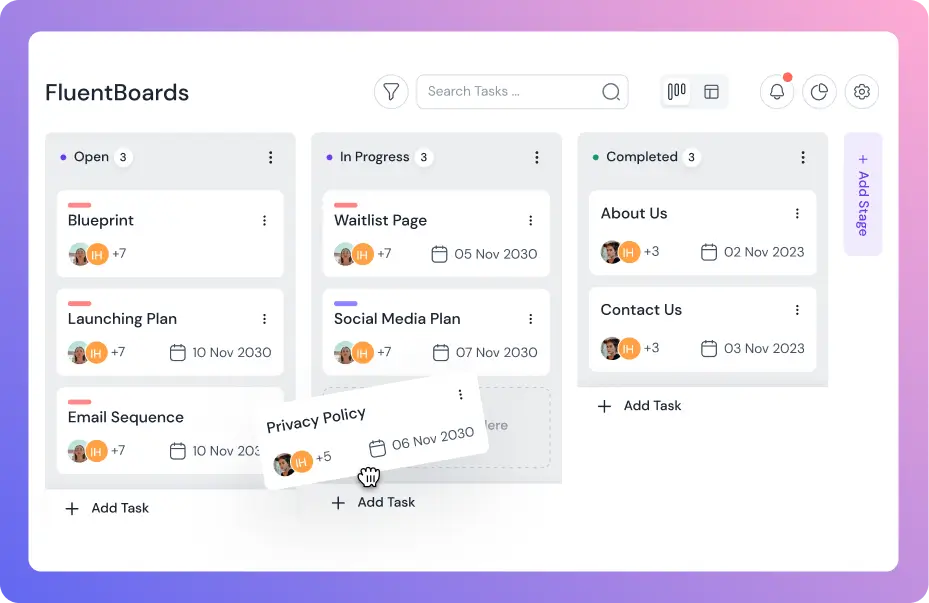
Leave a Reply